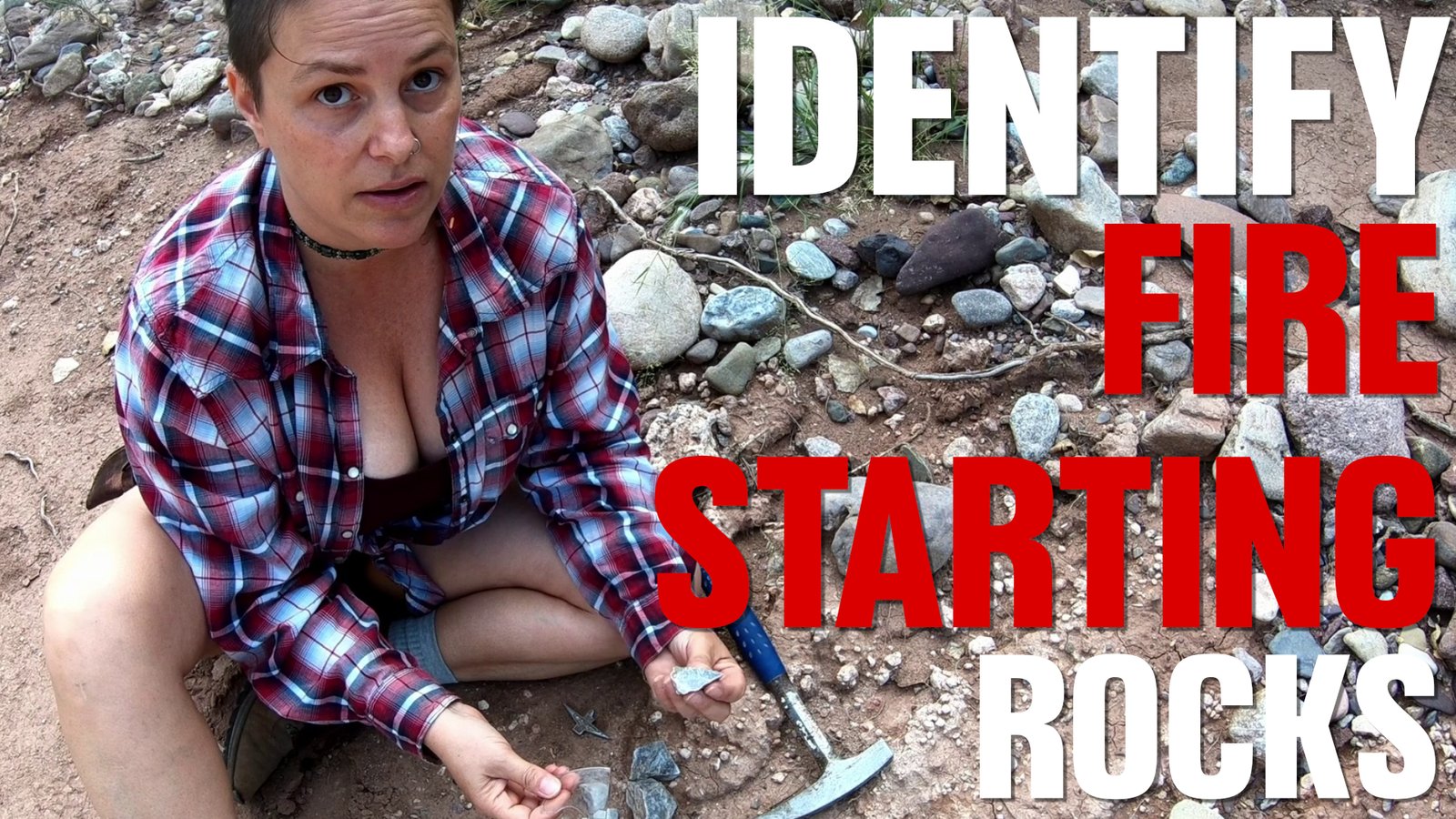Bugging out is a balance of running into problems and coming up with the best solution to those problems that cost the least in supplies and exertion.
You will be in a constant state of making choices. And when you make a choice, there will always be an outcome. The outcome may have a positive result, but there is usually a price to pay for that result.
When designing your bug out bag, you must consider keeping yourself in a state of homeostasis, or balance. Too few items in your bug out bag can lead to a state of being unprepared whereas too many items in your bag may weigh you down and become unmanageable.
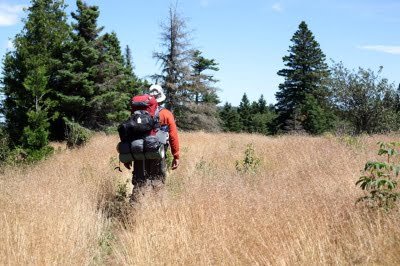
In this article, I mainly focus on the conceptual relationship between bugging out and the use of a bug out bag. I have taken these ideas and broken them down into the major factors you need to consider in a bug out situation.
Although there is no gear listed in this article, you can head over to my Ultimate Bug Out Bag Contents Listed and Explained which covers all the essential gear you need to outfit your bug out bag.
By the end of this article, you will have a solid foundation of how to bug out along with a good concept of how to prepare a bug out bag.
Let’s begin!
What is a bug out bag, anyways?
A bug out bag, or BOB, is a portable survival kit that contains supplies, nutrition, and hydration that typically lasts for a minimum of 72 hours.
The bug out bag is there for you to grab in the event of an emergency. To clarify, if there is ONE THING you have time to grab before you have to evacuate, the bug out bag is it!

If you can, try to take your bug out bag wherever you go or have a separate go bag in your vehicle for when you go to work or take trips.
You can purchase a pre-assembled bug out bag which is comprised of a general assortment of supplies, or you can build one yourself.
If you do decide to build one yourself, it does take some careful planning as you need to consider the final weight of the bag and make sure that all your supplies will fit into the bag you have selected.
However, a build-your-own bag can be highly specialized to your own unique survival scenario and can comprise of higher quality supplies; many pre-assembled bug out bags typically use generic goods.
Preparing for your personal bug out scenario
When designing your own bug out bag, there is so much to consider that it can feel overwhelming.
The best way to handle this is to break down your unique scenario, starting with the largest obstacles you will face and work your way down to the smallest.
Once you have designated your obstacles and also your strengths, you can build upon these and go from there.
I have designated 10 crucial factors to consider when bugging out and preparing your bug out bag. There are many more factors that could be added into the equation; this article goes over the most pertinent ones.

Factor 1: Disaster Type
The first and foremost factor to consider is the emergency situation at hand. Some disasters will have short term effects where civilization can return back to normal quickly. Other situations will be long term, or even permanent, effects which require more prepping to survive.
Emergency scenarios can also vary greatly by locale. For example, California is prone to fires and earthquakes, the South is prone to hurricanes and flooding, the North is prone to massive winter storms, etc.

There are also variable disasters that can happen anywhere at any time with little to no predictability.
One of these potential emergency scenarios is the destruction of the power grid (this is my favorite disaster!). Our power grid is antiquated and it wouldn’t take much to send it over the point of no return.
Imagine if the power went off and took months, or even years, for it to return….
No cell phones, TVs, Wi-Fi, refrigeration, light, and the list goes on and on.
On one hand, I think going old school and ditching all of these electronic leashes along with the destruction of big brother surveillance would be a huge relief of burden on society.

On the other hand, we would lose most of our modern day niceties along with medical and transportation technologies, throwing us back into the dark ages.
For a sudden and variable situation like this, there is really no way to know exactly how to prepare so your bug out bag will need to contain a more broad spectrum of supplies. Supplies for hunting, fishing, foraging, and scavenging will be paramount to survive a long term disaster scenario.
Another variable disaster situation could be a civil unrest event. Dense urban environments would be impacted by this disaster intensely.
If you live in an urban environment, your bug out bag will need to contain more self defense items and should be light and compact enough for quick maneuvering.

Self defense options such as a firearm (don’t forget the ammo!), pepper spray, taser, and even a guard dog could be chief in getting out of the city alive. Self defense items need to be handy on your person but carrying backups and ammo in your bag is vital.
Other variable disaster situations could be:
- Nuclear war
- Terrorist attack
- Prolonged drought
- Contaminated water
- Blight
- Pandemic
- Financial collapse
- World War III
- Alien invasion
Special note: Communication
It will be of extreme importance to have some sort of radio or communication device to keep track of the impending disaster. Do not expect cell phones to work as the intricate network of towers could easily be eliminated.

There should always be an AM/FM channel available broadcasting updates from news sources and the government. If all communication has been wiped out, then prepare for a serious long term or even permanent event.
Factor 2: Knowing when it is time to Bug Out
In an emergency scenario, timing is everything. Knowing when it’s time to bug out could equivocate to staying alive – or not.
It may be quite obvious that you need to bug out IMMEDIATELY such as a fire evacuation or earthquake. In this case, make sure your bug out bag is easy to get to.
Other situations may not be so obvious. If the electricity goes out, how many days do you wait until you need to get out of dodge? 4 days? A week? A month?
If there is a disease breakout in the city, how long until you decide it’s out of control and need to bail?

The reality is that you will never truly know the best time to bug out. You will need to use judgment and gut instinct to make that tough decision. Keeping informed of events unfolding by radio could be a pivotal tool in judging when it’s time to bug out.
What about bugging in? In some situations, it is better to stay put and ride out the storm. Hopefully, you will have enough supplies in stock within your home. Try not to use up your supplies in your bug out bag until you have no other choice. By this time, if you are dipping in your bug out bag to survive, it is probably high time to bug out!
Factor 3: Environmental Conditions
Environmental conditions that you will face when bugging out is a dominating factor of how you will design your bug out bag.
Do you live in the desert or the mountains? Is there water nearby or is municipal water your only source? Do you live in the inner city or in the suburbs? Does it get super hot? Super cold? Do the seasons change, requiring you to be prepared for variable weather conditions?

Environmental factors to consider when designing your go bag:
- Climate – heat, dryness, wind, cold, rain, snow, elevation
- Seasonal changes and weather variables
- Access to fresh water sources (check out my Best Emergency Water Filter article)
- Access to food sources (if on a longer bug out journey)
- Terrain to your bug out location
- Populus element – city, suburbs, rural
All of these variables could make a considerable difference in what supplies you will put in your bag.
The hardest element to plan for is variable weather conditions. If you live in an area that has four seasons, you will need to have a little bit of everything in your bug out bag.
Factor 4: Route to Bug Out Location
When planning your bug out bag, take into consideration the potential to find resources along your route while traversing to your designated bug out location.
The main resource in my bug out plan is access to water. Packing water is bulky and heavy which can weigh you down considerably. Ideally, you will have a water source along your route so you don’t have to pack out too much water. You will want to at least start with enough water for 72 hours.
Another resource is shelter. Will there be places you can hunker down for a night safely and with cover? If not, have a makeshift shelter ready. This could be as simple as a tarp or as robust as a lightweight tent.
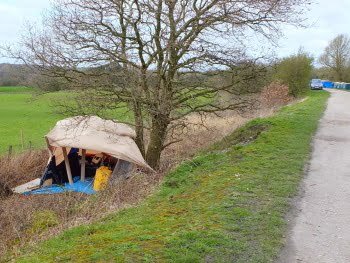
Food sources along your bug out route will probably be less reliable. Even if there is a store along the way, it could be risky to rely upon in a time of emergency. Have at least 72 hours of calories packed along with you.
There will also be obstacles you need to visualize which can be difficult as so many variables can arise while bugging out. Some are constants, such as:
Terrain – will there be hills, crevices, creeks, streams? What kind of footwear will you need? Will you have to wade through water?
Barricades – if in a city, will there be barricades in place? If so, how will that impact your route? Can you take backroads? Can you take the highway?
Traffic – will your route be congested with people and vehicles?
Try to plan your bug out route as the path less traveled. Considering that most people will be trying to find the path of least resistance, it will no longer be a path of least resistance if everyone uses that same path.
Factor 5: Mobility
Now that we have discussed our disaster type, environmental conditions and bug out route, we need to factor in how we will be getting ourselves to our bug out location.
There are three main ways to traverse in a bug out situation:
- Vehicle
- Bicycle
- Foot
ALWAYS factor in that you will be on foot. As much as we want our vehicles to bug us out, they may not get us all the way to our bug out location, and they may not even be accessible at all!
This is especially true for urban dwellers. Chances are you will not be able to get a vehicle down the road in an emergency as the roads will be congested with traffic, people, emergency vehicles, and barricades.
If you do manage to get into your vehicle for evacuation, be prepared to exit at any moment as sitting in a grinding halt of traffic can place you in a dangerous situation.

Instead of relying on a vehicle, I think a bicycle with a trailer is an ideal way to bug out from the inner city. If you do factor in a bicycle for your bug out plan, choose the most accessible route out of the city where there won’t be piles of cars or barricades blocking your way.
If you live on the outskirts of town or in a more rural environment, then a vehicle is more likely to be successful. However, you may not even need to bug out if you are in such a setting.
If you do have access to your vehicle, you need to calculate your fuel mileage and make sure it will get you to where you need to be.
Special Note:
Trucks that run on diesel can be equipped with a drag tank of up to 100 gallons of fuel.
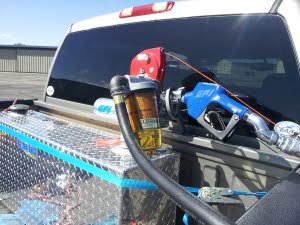
Make sure to rotate your fuel out of your drag tank for maximum efficacy.
If you are on foot, you need to factor in your strength and endurance capabilities to haul out your supplies and estimate how far you will be bugging out to.
At readyman.com, they put on a 65 mile bug out challenge and tested several bug out bag sizes ranging from 10 pounds to 75 pounds. Even the biggest dudes agreed that leaner is better and to use your wit to survive as opposed to relying on a bunch of gear that you will probably not end up using anyway.
Factor 6: Longevity of Bug Out Bag
How long will your supplies last in your bug out bag? Again, this syncs up with your environment and route to your bug out destination.
The reality is that most of us do not (and will never have) an ideal bug out location that is stocked full of supplies ready for our arrival.
My on-foot bug out spot is an old trailer I found in the woods in Montana. It is beaten up and is on private property, but it has an old stove, is next to a trout filled creek, has plenty of timber, and would be a decent shelter for at least long enough for me to fly under the radar until I plan my next move, or society returns back to normal.

It is not ideal and by no means can I put supplies in there, but for now it’s the best plan I’ve got as it is close enough for me to trek there by foot. (I have a different bug out plan involving my vehicle).
If you are fortunate enough to have a fully equipped bug out location that you own, then your bug out bag needs to only last you as long as your travel time will take to get there. Also, account for the fact that you may not be able to access your vehicle. How long will it take you to arrive at your destination on foot?
For the rest of us, we need to be a little more prepared with bug out equipment that will sustain us, such as hunting and fishing gear, and water purification supplies.
Factor 7: Bugging out with Family
Some of us will be bugging out alone, but many of us will have a partner, family, friends, and possibly elderly people and children on the trek.

At first thought, you may feel that the family factor will slow you down, and it likely will. However, having a strong and prepared family unit can greatly increase your chances for survival.
Your first step is to get your family on board with the bug out plan. Explain to them exactly what a bug out bag is and share your bug out location and route. Communication is key here.
The second step is to customize a bug out bag for each family member. Everyone can pull weight in some form, even kids and grandparents.
Bug out bags for kids
Creating a bug out bag for kids varies greatly by their capabilities and age. Make sure that whatever they are carrying can easily be carried by you if they become too tired.
For smaller children, a small bag, or even a fanny pack, can be filled with lightweight items such as medical supplies, fishing gear, and sanity keepers (dice, cards, etc.)

Also make a little room in the young one’s bags for comforts, such as coloring books and crayons or a favorite stuffed animal.
Bug out bags for the elderly
Bugging out with elderly folks will slow you down in the short term but their wisdom can provide valuable survival knowledge in the long run, especially if they are from the Great Depression era.
They may have knowledge of times past where people relied on family and hard work to survive. There is a good chance they will know how to run old farm equipment and have knowledge of pioneering skills that have been lost in recent generations.

When preparing to bug out, grandparents may offer to stay behind as they will likely be harboring some guilt that they will slow the family down.
If you prepare them beforehand and put them in charge of certain tasks, it will give them a sense of purpose to keep going.
Grandma can be in charge of packing out lightweight calories such as dehydrated foods and trail mix. She can be responsible for preparing meals and giving out snacks.
Grandpa will have something to prove in a bug out scenario and will try to carry more than he can handle. Have him carry lighter yet important tools such as axes, hunting equipment, bow saws, etc.
Special Note: Bugging out with Pets
In times of an emergency, the question of pets comes up along with feelings of guilt and remorse. Do we set Polly free or try to bring her along? Does Fido stay at home and wait for us to come back?

The main question is if they will set you back, be neutral, or actually be an asset on the trek.
As far as cats go, bugging out would be an extremely stressful event for them and they will probably run away at the first opportunity. Cats are independent and resilient and have a pretty good likelihood of surviving on their own. I would consider cats to be a setback and should be let free to survive on their own.
Cats typically stay near their home and if you do end up returning home, chances are the cat will be there to greet you.
Small caged animals may be easy enough to transport, are low maintenance and don’t take much for supplies. These kinds of animals can fall into the neutral territory. Make sure to have an easy enough transport cage to pack them out with you, or set them free before you leave.
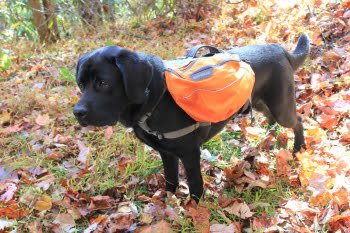
Dogs can be a HUGE advantage in a bug out situation. They can be guardians of the family and can protect you in defensive situations. If you get injured, dogs have been known to get help from passersby. Dogs fall into the asset category.
Even little dogs can warn you of dangers and possibly scare off perps with their bark.
Dogs can haul their own food and supplies with a special outdoors hiking dog pack.
Factor 8: Using your Strengths
When building up your bug out bag, consider your strengths and use them to your advantage.
You may find yourself in a position where you can barter for supplies in exchange for your knowledge and service.
If you are a doctor, nurse, EMT, or medic, pack extra medical supplies in your bag. Your skills could be of extreme value in a SHTF situation. Whether you hold back medical care in exchange for goods will be in your own moral jurisdiction to decide upon.
Expert hunters and fishermen have an advantage and should pack along their gear to provide bounties for their families and for trade.

Everyone has a skill that could be useful in a bug out situation; even if you don’t think so, get creative!
Sewing, cooking, crafting, could all be good barter worthy skills.
Good at drawing? Become skilled at map making. Bring along a drawing pad and pencils. The Cartographer’s Guild forum is the best resource I have found to learn how to make maps by hand.

Good at writing? Document the journey and take notes of where you can find food and water. Documenting is an extremely valuable tool so make sure to have a journal in your BOB.
Are you spiritual? People will need hope and guidance in times of crisis. Become a spiritual influence and you will be protected. Pack your Bible!
Good at networking? Use your people skills and make connections.
Not good at anything? Well then LEARN!
One of my SHTF skills is foraging for wild edible and medicinal plants. Wow, what a valuable skill to have!
I had to learn, research, and do fieldwork to get good at this skill.
I also have several field guide books that are ready to be grabbed and thrown into my bug out bag at a moments notice.
Choose a skill, learn it, and pack accordingly.
Factor 9: Usability
So you have decided to purchase a pre-packed bug out bag or assemble one from scratch. You get all of your goodies in the mail and start taking it apart, admiring all of your wares. I just have one question for you…
Do you even know how to use all this stuff?
What is the point of packing out a bunch of supplies if you don’t know how to use them!
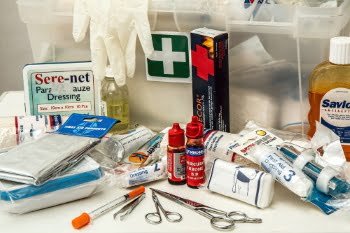
Take some time and learn how to use all of your supplies properly.
Also, use your bug out bag occasionally to get acquainted with your supplies. This will also help you figure out what you are missing or could use and will help you figure out how to pack everything in the most efficient manner as possible.
Factor 10: Bugging Out as a Woman
Let’s face it, men and women are not created equal. In general, men are stronger, have more endurance, have better circulation, and can usually keep warmer than women.

Not to mention us women have to deal with worrying about getting pregnant and having our periods (sorry, guys!)
Our circumstances may require some more thought when prepping to bug out but by no means will slow us down – as long as we prepare accordingly.
As I thought about this subject more I realized that this is a huge topic on its own, so I am working on writing an article about prepping and bugging out just for women. Stay tuned!
Conclusion
As we go about our daily lives, it can be hard to break free of our routine to think about bugging out in a disaster scenario, let alone coughing up the cash for stocking a bug out bag.
But, if a disaster does strike and you need to bug out, are you prepared?
Start small and slowly amass your stockpile, assemble your bag, and you will have a little more peace of mind in this uncertain world we live in.


